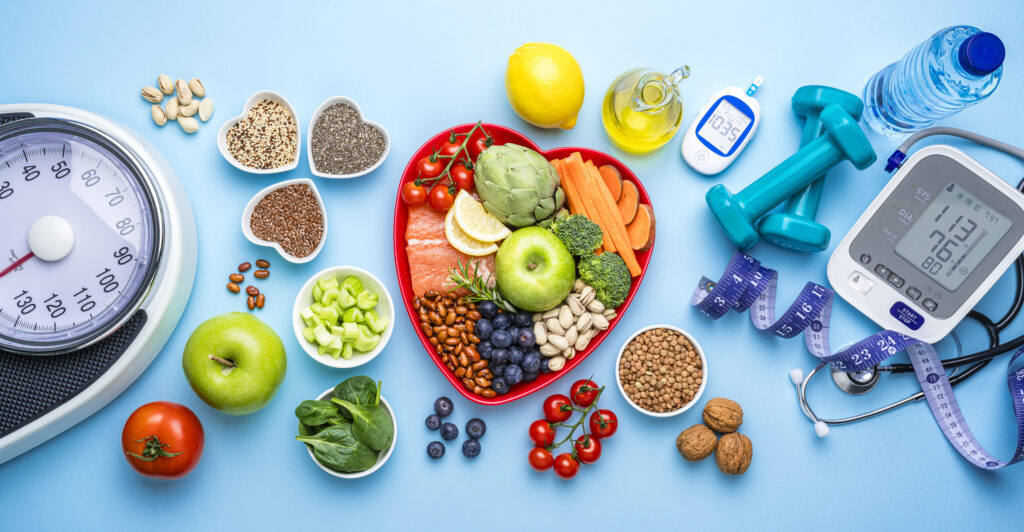Sodalis Blogs
View our upcoming news updates at Sodalis!
- All
Senior Housing News – Sodalis Senior Living Appoints New CEO
Following is a story from Senior Housing News regarding the announcement of Terry Rogers as its new Chief Executive Officer. Sodalis Senior Living has appointed Terry Rogers as its new CEO. Rogers brings more than 25 years of experience to the position, and is a three-time CEO, according to a press release. He is credited with “multi-site expansions, driving operational improvements and championing technology adoption to enhance both resident and team member experiences,” the release states. “I am honored to join Sodalis Senior Living at such a pivotal moment where we see the convergence of incredible demand as the Baby Boomers reach retirement, new technology and A.I. impacting every part of society, and advances in longevity science allowing us to live longer better,” Rogers said in the release. “These three big shifts bring unprecedented opportunities for older adults to live their best lives.” To read the story, CLICK HERE.
McKnight’s Senior Living – Sodalis Senior Living names Terry Rogers CEO
Following is a story from McKnight’s Senior Living regarding the announcement of Terry Rogers as its new Chief Executive Officer. Terry Rogers has been appointed CEO of San Marcos, TX-based Sodalis Senior Living. He will oversee Sodalis’ growing portfolio of 23 assisted living and memory care communities across Florida, Georgia and Texas. Rogers has more than 25 years of experience in senior living, including roles as CEO of Orlando, FL-based Westminster Communities of Florida, president and CEO of Englewood, CO-based multi-site senior living organization Christian Living Communities and Cappella Living Solutions, and president and CEO of St. Martin’s in the Pines, a large retirement community in Birmingham, AL. Rogers graduated from the University of Alabama at Birmingham with a degree in financial management. To read the story, CLICK HERE.
Senior Living News – Sodalis Senior Living Appoints Rogers as Chief Executive Officer
Following is a story from Senior Living News regarding the announcement of Terry Rogers as its new Chief Executive Officer. Sodalis Senior Living has announced in a press release the appointment of Terry Rogers as its new chief executive officer. With a career spanning more than 25 years in mission-driven senior living organizations, Rogers brings experience in strategic leadership, operational excellence, and financial performance to the role. “I am honored to join Sodalis Senior Living at such a pivotal moment where we see the convergence of incredible demand as the baby boomers reach retirement, new technology and AI impacting every part of society, and advances in longevity science allowing us to live longer better,” Rogers stated. “These three big shifts bring unprecedented opportunities for older adults to live their best lives I look forward to partnering with our incredible team members to elevate resident experiences, strengthen our culture, and shape the next era of growth for Sodalis.” Founded in 1996, Sodalis Senior Living operates a growing portfolio of independent living, assisted living, and memory care communities across Texas, Florida, and Georgia. To read the story, CLICK HERE.
Navigating Holiday Visits with Loved Ones with Memory Loss
Creating Meaningful and Comfortable Celebrations Together The holiday season is often a time for cherished traditions, joyful gatherings, and reconnecting with family and friends. However, for those whose loved ones are living with memory loss due to conditions like Alzheimer’s or other forms of dementia, holiday visits can come with unique challenges. Navigating these moments with empathy, patience, and preparation can help create meaningful experiences for everyone involved. Understanding the Experience of Memory Loss Memory loss can affect not only the ability to recall names, places, and events but also how a person perceives and engages with their surroundings. The hustle and bustle of holiday festivities—loud conversations, unfamiliar faces, changes in routine—can sometimes feel overwhelming or confusing. Tips for Preparing for Holiday Visits Communicate Ahead of Time: Let family and friends know what to expect, and share updates on your loved one’s condition. This can help manage expectations and foster understanding among guests. Simplify Gatherings: Consider hosting smaller, more intimate celebrations. Large crowds can be disorienting, so keeping the group manageable may create a more comfortable atmosphere. Familiar Environments: Whenever possible, host gatherings in a familiar space. If visiting elsewhere, bring along cherished items—photos, favorite music, or a familiar blanket—to provide comfort. Maintain Routines: Try to stick to your loved one’s daily schedule, especially with meals and rest times. Predictability can help reduce anxiety and confusion. Engaging Loved Ones During Visits Focus on the Present: Instead of quizzing your loved one about the past, engage in activities that don’t rely on memory, such as listening to music, decorating cookies, or looking through photo albums without expectations of recall. Use Gentle Reminders: When introducing people, offer context gently. For example, “This is your niece, Sarah, who brought you flowers last week.” Encourage Participation: Involve your loved one in simple holiday traditions they’ve always enjoyed, adapting them if necessary. Even small tasks can foster a sense of belonging and accomplishment. Be Patient and Flexible: Plans may need to change. If your loved one becomes tired or agitated, allow for breaks or a quiet space away from the festivities. Supporting Yourself and Others Remember, you are not alone. Caring for someone with memory loss can be emotionally taxing, especially during the holidays. Lean on your support network, share responsibilities with other family members, and make time for your own self-care. Encourage open conversations with children and other guests about what to expect and how they can help create a positive environment. Compassion and understanding go a long way in making the holidays meaningful for everyone. Finding Joy in New Traditions While holidays may look different than they did in the past, they can still be filled with warmth, laughter, and connection. Embrace new traditions, celebrate small moments, and focus on creating memories in the present. Sometimes, the most meaningful celebrations are found in simplicity and togetherness. Navigating holiday visits with loved ones experiencing memory loss requires patience, preparation, and a loving heart. By prioritizing comfort, understanding, and flexibility, you can ensure that the season remains a time of connection and joy—for your loved one and for yourself.
Sodalis Senior Living Appoints Terry Rogers as Chief Executive Officer
Sodalis Senior Living, a leading provider of compassionate, resident-focused care, is pleased to announce the appointment of Terry Rogers as its new Chief Executive Officer. With a distinguished career spanning more than 25 years in mission-driven senior living organizations, Mr. Rogers brings a wealth of expertise in strategic leadership, operational excellence, and financial performance to the role. Mr. Rogers is a three-time CEO with a remarkable track record in steering organizations toward sustained growth, innovation, and operational success. His leadership has been instrumental in multi-site expansions, driving operational improvements, and championing technology adoption to enhance both resident and team member experiences. Renowned for his collaborative approach, he is deeply committed to team empowerment, fostering a culture of innovation, and ensuring that compassionate, resident-centric care remains at the heart of every initiative. Mr. Rogers joins Sodalis Senior Living with a clear passion for advancing the organization’s mission through servant leadership and a collaborative partnership with residents, families, and team members. He is dedicated to building on Sodalis’ tradition of excellence while embracing innovation to meet the evolving expectations of today’s older adults. His forward-thinking vision centers on nurturing empowered teams, driving strategic change, and providing supportive environments where every resident thrives. Statement from Terry Rogers “I am honored to join Sodalis Senior Living at such a pivotal moment where we see the convergence of incredible demand as the Baby Boomers reach retirement, new technology and A.I. impacting every part of society, and advances in longevity science allowing us to live longer better. These three big shifts bring unprecedented opportunities for older adults to live their best lives.” said Rogers. I look forward to partnering with our incredible team members to elevate resident experiences, strengthen our culture, and shape the next era of growth for Sodalis.” About Sodalis Senior Living Founded in 1996, Sodalis Senior Living operates a growing portfolio of independent living, assisted living, and memory-care communities across Texas, Florida, and Georgia. Sodalis is committed to personalized care, meaningful engagement, and helping residents thrive through every stage of aging. For more information, visit www.sodalissenior.com.
Visiting Tips: Making the Most of Your Time Together in Assisted Living Communities This Holiday Season
The holidays are a special time to reconnect with family and friends, and for those with loved ones in assisted living communities, visits are more important than ever. These moments offer opportunities for joy, sharing traditions, and making lasting memories. To help you make the most of your visits this holiday season, here are some thoughtful tips to ensure your time together is meaningful, comfortable, and enjoyable for all. Plan Ahead and Coordinate Before your visit, check with the assisted living community regarding their holiday schedules, visitor policies, and any special events. Many communities host festive activities or meals where families are welcome to join in. Call ahead to confirm details and see if you can participate in any group celebrations or contribute something special, like favorite treats or holiday decorations. Bring the Holiday Spirit Decorate your loved one’s space with festive touches—a small tree, twinkling lights, or familiar ornaments from home can instantly create a warm, cheerful atmosphere. Engage your loved one in decorating, reminiscing about past holidays, or listening to favorite seasonal songs together. Even bringing along familiar scents like cinnamon or pine can evoke happy memories and enhance the mood. Focus on Meaningful Activities Prioritize activities that match your loved one’s abilities and interests. Consider reading holiday stories aloud, baking simple treats together, or working on a craft project like making greeting cards. Sharing a photo album or watching old family videos can spark conversation and laughter. Sometimes, simply sitting together and holding hands can be the most treasured gift of all. Be Mindful of Energy Levels Visits during the holidays can be exciting but also tiring for older adults. Pay attention to your loved one’s cues and take breaks if needed. Short, frequent visits might be more enjoyable than one long stay. If your loved one tires easily, plan your visit during their best time of day, often mid-morning or early afternoon. Involve the Whole Family Include children and other family members in your visits. Kids can bring joy and energy, but remind them to be gentle and patient. Encourage them to share stories, sing carols, or show off school projects. For those who can’t be there in person, arrange a video call or send cards and photos to share during your visit. Respect Community Guidelines Assisted living communities may have special protocols during the holidays, especially regarding group gatherings or health precautions. Respect staff instructions, mask policies, and other guidelines to keep everyone safe. Ask staff if there are ways your family can contribute to the holiday spirit for all residents, such as participating in a sing-along or helping decorate common areas. Cherish the Moments—Big and Small The greatest gift you can offer is your presence. Focus on being fully present—put away your phone, listen attentively, and soak in the joy of togetherness. Take photos, share hugs, and express your love and gratitude. These simple moments often become the most precious memories for everyone involved. Final Thoughts The holidays in an assisted living community can be filled with warmth, laughter, and connection. By planning ahead, bringing festive cheer, and focusing on what matters most, you’ll create lasting memories with your loved one during this special season. Happy holidays to you and your family!
Adopting a Senior Pet: What You Need to Know
Why Giving Older Animals a Second Chance Can Change Your Life When most people think about adding a new furry friend to their family, they picture playful puppies or energetic kittens. But there’s a growing movement encouraging animal lovers to consider adopting senior pets. November is also recognized as National Adopt a Senior Pet Month, highlighting the many benefits of giving older animals a forever home. These older companions may not have the youthful bounce of their younger counterparts, but they offer unique joys and benefits that can make your adoption experience truly rewarding. Why Adopt a Senior Pet? Gratitude and Loyalty: Senior animals often show deep appreciation for their new families and can form strong bonds quickly. Calm Temperament: With age comes a mellow personality. Older pets are usually less rambunctious and easier to manage, making them excellent companions for quieter households or first-time adopters. Known Personality: What you see is what you get. Shelters and foster homes can provide a clear picture of a senior pet’s personality, likes, and dislikes, making it easier to find a good match. Training and Routine: Many senior pets are already house-trained and understand basic commands, saving you time and effort. Considerations Before Adopting Adopting a senior pet is a wonderful act of compassion, but it’s important to go in prepared. Here are some factors to keep in mind: Health Needs: Older pets may require special diets, regular veterinary checkups, and medication for age-related conditions such as arthritis or dental issues. Make sure you’re ready for the financial and emotional commitment. Shorter Time Together: While this can be bittersweet, it’s important to acknowledge that senior pets may have less time left. Focus on making their remaining years as joyful as possible. Activity Level: Senior pets typically enjoy leisurely walks and gentle play rather than intense exercise. Adjust your expectations and routines accordingly. Adaptability: Senior pets can adapt to new environments, but they may need patience and gentle encouragement as they settle in. Preparing Your Home for a Senior Pet To help your new companion feel comfortable, make sure your home is senior-friendly: Add non-slip mats to prevent falls on slippery floors. Provide soft bedding for achy joints. Ensure food and water bowls are easily accessible. Consider ramps or steps if your pet has trouble climbing. Building a Strong Bond Senior pets may need extra reassurance as they transition into their new home. Spend time together, offer gentle affection, and maintain a consistent routine. Celebrate small victories, like a wagging tail or a contented purr, as signs your pet is settling in. Conclusion Adopting a senior pet isn’t just an act of kindness—it’s a chance to experience unconditional love and companionship from an animal who truly appreciates a second chance. With a little patience, preparation, and a lot of heart, you can transform the life of an older pet—and they just might transform yours in return.
The History of Popular Halloween Symbols
Unmasking the Origins of Jack-o’-Lanterns, Black Cats, and More Halloween is a holiday rich with tradition, superstition, and iconic imagery. From glowing jack-o’-lanterns perched on porches to black cats darting across moonlit paths, these symbols have become an essential part of the spooky season. But where did these hallmarks originate, and why have they persisted in our celebrations? Let’s take a closer look at the fascinating history behind some of Halloween’s most popular symbols. Jack-o’-Lanterns: Lighting the Way from Ireland The jack-o’-lantern is perhaps the most recognizable symbol of Halloween. The tradition traces back to Irish folklore and the tale of Stingy Jack, a cunning man who tricked the devil and was doomed to wander the earth with only a carved-out turnip lit by an ember. When Irish immigrants arrived in America, they discovered that pumpkins—a fruit native to North America—were larger and easier to carve than turnips, and thus, the modern jack-o’-lantern was born. Today, carving pumpkins and displaying them with ghoulish grins is a beloved Halloween ritual. Black Cats: From Good Luck to Superstition Black cats are another enduring Halloween image, often associated with witches and bad luck. In ancient Egypt, cats were revered and considered good fortune. However, in Medieval Europe, black cats became linked with witchcraft, accused of being witches’ familiars or even witches in disguise. This fear was so widespread that black cats were often hunted or shunned. Over time, their mysterious appearance and nocturnal habits solidified their association with Halloween, a night already filled with supernatural lore. Witches: Spellbinding Icons of the Season The figure of the witch, complete with pointy hat and broomstick, is rooted in centuries-old folklore and feared pagan practices. Accusations of witchcraft swept through Europe and colonial America, with tales of women (and men) practicing dark magic. The image of the witch riding a broomstick comes from ancient fertility rituals, where brooms were believed to have magical properties. Today, witches are a staple of Halloween, embraced as symbols of both fear and empowerment. Ghosts: Spirits of the Past Ghosts have long been associated with Halloween, a time when, according to Celtic tradition, the veil between the living and the dead was thinnest. The ancient festival of Samhain marked the end of the harvest and the beginning of winter, a period believed to invite spirits to return to earth. This belief evolved into dressing in costumes to disguise oneself from wandering spirits—a tradition that laid the groundwork for modern trick-or-treating and Halloween parties. Bats: Creatures of the Night Bats’ nocturnal nature and mysterious flight patterns made them creatures of superstition. During Samhain, bonfires were lit to ward off evil spirits, which attracted insects and, in turn, bats. Their association with darkness, caves, and the unknown made them a natural fit for Halloween’s eerie atmosphere. In pop culture, bats are often tied to vampires and haunted houses, further cementing their place as Halloween icons. Spiders: Weaving Tales of Mystery Spiders, with their intricate webs and silent movements, have long been considered omens in folklore. Some legends viewed spiders as protectors against evil, while others saw them as harbingers of misfortune. Their webs, often found in dark and abandoned places, contribute to the haunted ambiance we seek each October 31st. Conclusion The images that define Halloween today—jack-o’-lanterns, black cats, witches, ghosts, bats, and spiders—are more than mere decorations. They are symbols steeped in centuries of history, folklore, and cultural adaptation. As you celebrate Halloween, take a moment to appreciate the rich stories and traditions behind these spooky icons that bring magic and mystery to the season.
Nutrition and Physical Therapy: Supporting Senior Health from the Inside Out
As we age, maintaining good health becomes increasingly important for preserving independence and quality of life. Two key pillars of senior wellness—nutrition and physical therapy—work together to support overall well-being, strength, and resilience. In recognition of National Physical Therapy Month, it’s a great time to highlight the importance of physical therapy in promoting mobility and recovery. By understanding how diet and movement intersect, older adults can empower themselves to live healthier, more active lives from the inside out. The Role of Nutrition in Senior Health Nutrition lays the foundation for the body’s ability to repair, move, and thrive. For seniors, proper nutrition is essential for: Maintaining Muscle Mass: Adequate protein intake helps prevent age-related muscle loss (sarcopenia), which is crucial for mobility and balance. Promoting Bone Health: Calcium and vitamin D are vital for strong bones, reducing the risk of osteoporosis and fractures. Supporting Immune Function: Vitamins, minerals, and antioxidants help defend against illness and aid recovery from injuries. Managing Chronic Conditions: Balanced meals can help control blood pressure, cholesterol, and blood sugar levels, reducing complications from diabetes, heart disease, and more. As appetite and absorption may change with age, seniors should focus on nutrient-dense foods—lean proteins, whole grains, fruits, vegetables, and healthy fats. Hydration also remains critical, as dehydration can exacerbate health challenges. Physical Therapy: Moving Toward Better Health Physical therapy is not just for recovery after injury; it is a proactive approach to maintaining mobility, balance, and independence. For older adults, physical therapy offers: Improved Strength and Flexibility: Targeted exercises help preserve muscle tone and joint mobility. Fall Prevention: Balance training and gait exercises reduce the risk of falls, a leading cause of injury among seniors. Pain Management: Techniques such as stretching, massage, and movement therapy can ease arthritis and chronic pain. Enhanced Quality of Life: Remaining active fosters social engagement, mental health, and self-confidence. Nutrition and Physical Therapy: A Synergistic Approach When nutrition and physical therapy are combined, the benefits multiply. Proper nutrition fuels the body for exercise and speeds recovery, while regular movement improves appetite and digestion, creating a positive feedback loop. Physical therapists often collaborate with dietitians to design personalized plans that meet an individual’s unique needs and goals. For example, a senior recovering from hip surgery might receive physical therapy to regain mobility and a nutrition plan rich in protein, calcium, and vitamin D to accelerate healing. This integrated approach ensures that the body has both the resources and the resilience to recover and thrive. Tips for Seniors: Integrating Nutrition and Movement Consult Professionals: Work with a registered dietitian and a licensed physical therapist to create a tailored wellness plan. Focus on Variety: Enjoy a colorful plate and mix up exercise routines to keep both body and mind engaged. Listen to Your Body: Adjust food choices and activity levels based on how you feel, and communicate changes to your healthcare team. Stay Social: Join group classes, cooking workshops, or walking clubs to foster connections and motivation. Set Realistic Goals: Small, consistent steps yield lasting results—celebrate progress along the way! Conclusion Senior health is best supported by a holistic strategy that recognizes the powerful connection between nutrition and physical therapy. By nourishing the body and encouraging movement, older adults can protect their independence, boost their energy, and enjoy a vibrant life. Investing in both diet and exercise isn’t just about adding years to life—it’s about adding life to years.
Inside the Food Bank: The Journey from Donation Sorting to Spreading Hope
Food banks play a crucial role in supporting communities by providing food to those in need. In recognition of National Food Bank Week, we want to highlight the vital work being done to combat hunger. While many are familiar with the idea of donating canned goods or volunteering for a day, few truly understand the intricate operations that keep a food bank running smoothly. In this blog post, we’ll take you behind the scenes, exploring every step—from sorting donations to distributing them—and highlighting the dedicated efforts that make it all possible. Receiving Donations: The First Step The journey begins with the arrival of donations. These come from a variety of sources: individuals, grocery stores, local farms, and corporate partners. Whether it’s a box of pasta from a neighbor or a pallet of produce from a supermarket, each contribution is welcomed and carefully logged. Volunteers and staff track incoming goods to ensure accountability and transparency, which helps maintain trust with donors and recipients alike. Sorting and Quality Control Once donations are received, the next critical step is sorting. Volunteers gather around tables to inspect each item, checking expiration dates and looking for signs of damage. Safety is paramount—food that’s expired or compromised is set aside and disposed of responsibly. Donations are then grouped by type (canned goods, fresh produce, dairy, grains, etc.) for easier handling. This meticulous process ensures that only safe, high-quality food reaches families in need. Inventory Management: Organizing for Efficiency After sorting, food is moved into the food bank’s storage areas. Shelves, refrigerators, and freezers are organized to maximize space and keep foods fresh. Staff use inventory management systems to track quantities, monitor shelf life, and plan for upcoming distributions. Effective organization prevents waste and makes it easier to respond quickly when demand spikes—such as during holidays or emergency situations. Packing and Preparing Distributions When it’s time to distribute food, volunteers assemble boxes or bags tailored to recipients’ needs. Some food banks offer customizable packages, allowing families to select items based on dietary preferences or restrictions; others provide standardized boxes to ensure fairness. Packing teams work efficiently to fill each order, taking care to include a balance of nutritious options. Distribution: Delivering Hope Distribution methods vary. Some food banks operate on-site pantries where recipients can pick up food directly. Others organize mobile markets or partner with local organizations to deliver supplies to hard-to-reach communities. In every case, the focus remains on dignity and respect—staff and volunteers greet recipients warmly, answer questions, and offer resources beyond food, like nutrition education or assistance programs. The Role of Volunteers None of this would be possible without the army of volunteers who give their time and energy. From sorting donations to packing boxes and greeting clients, volunteers form the backbone of every food bank. Their dedication turns a warehouse of goods into a lifeline for countless families. Conclusion The operation of a food bank is a testament to community spirit and logistical expertise. Every can sorted, every box packed, and every meal distributed reflects the compassion and commitment of people working together to fight hunger. Next time you donate or volunteer, remember the intricate process behind the scenes—and know that your contribution truly makes a difference.











